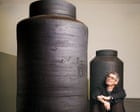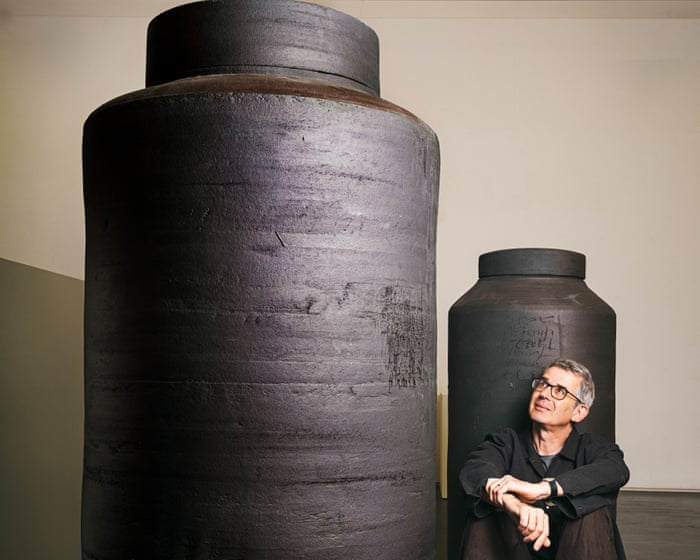Can ceramics be demonic? Edmund de Waal’s obsession with a deeply disturbing Dane
The great potter explains why he turned his decades-long fixation with Axel Salto – maker of unsettling stoneware full of tentacle sproutings and knotty growths – into a new show
Potter and writer Edmund de Waal, a dark silhouette of neat workwear against the blinding white of his studio, is erupting with thoughts, all of them tumbling out of him at once. He is giving me a tour of the former gun factory on a London industrial estate gently disciplined into architectural calm. It has work stations for his staff (it’s quite an operation); store rooms; and a main space nearly empty but for some giant black lidded vessels he made in Denmark, as capacious as coffins. At either end, up discreet sets of steps, are the places of raw creation. One, with its potter’s wheel, is where he makes; the other, with its desk and bookshelves, is where he writes.
He opens a door to the room housing his two mighty kilns, its back wall lined with rows of shelves with experiments in form and glaze, and tells me of his irritation when people comment on the sheer tidiness of the whole place. “It’s porcelain,” he says with passionate emphasis. Dust and dirt are the enemy. Potters, he points out, “have struggled for hundreds and hundreds of years to keep things clean so that they don’t blow up in kilns, or don’t bloat or don’t dunt or all the other myriad things that can happen”. He is old enough, he says, to have had the kind of potter’s apprenticeship that involved the endless sweeping up of clay dust. Dust is the traditional bringer of potter’s lung – the chronic condition, silicosis. Clouds of dust surround any pottery-making endeavour, if you’re not careful.
Continue reading...
© Photograph: Linda Nylind/The Guardian

© Photograph: Linda Nylind/The Guardian

© Photograph: Linda Nylind/The Guardian